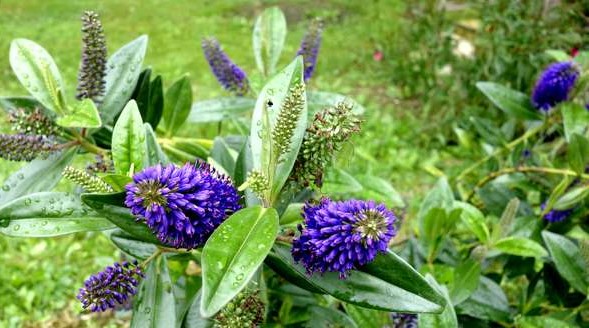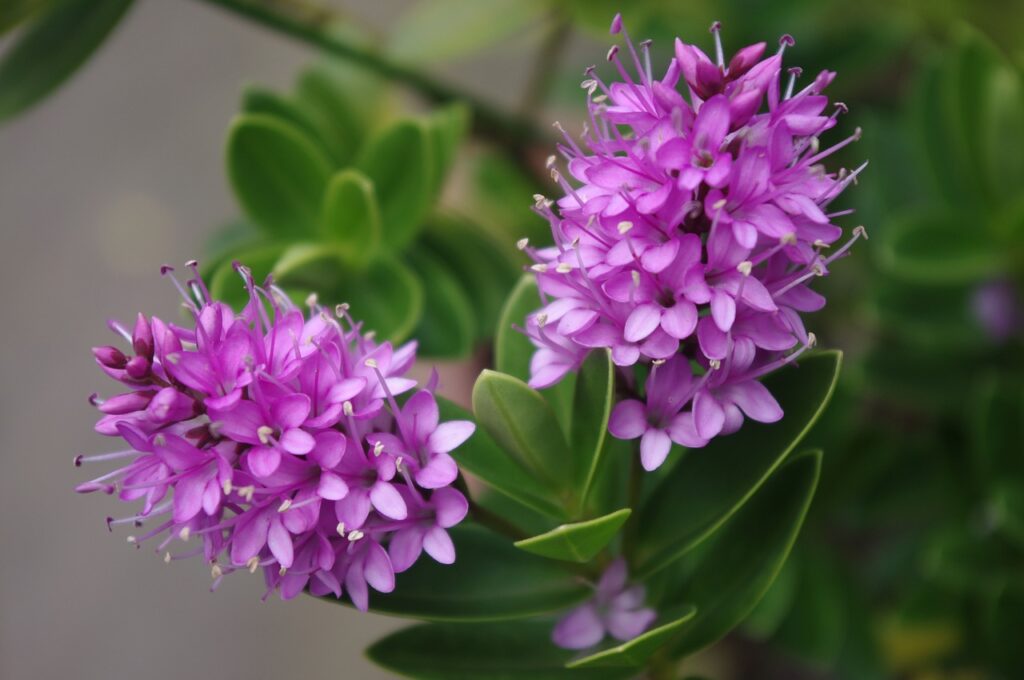
Largely native to New Zealand, Hebe is a plant commonly referred to as shrub veronica . Whichever variety you choose, this perennial is just as much appreciated for its decorative foliage as for its original flowering in spikes. How to cultivate and maintain the Hebe ?
Beautiful foliage!
There is at least one shrubby speedwell adapted to each of the French climates, whether cold and humid or, on the contrary, sunny and drier. It must be said that the genus Hebe has in its ranks no less than 350 varieties of plants distinguished by the shape of their leaves and the color of their flowers.
The blue bloom is not legion! The spiky flowers of the Hebe plant can occasionally take on purple, white, blue or even pink hues. In addition, this lasting flowering is established for at least two months, in spring or summer and can be renewed in autumn.
The original and evergreen foliage of the shrub veronica is also one of its major assets of this perennial plant , taking turns in colors as varied as green, copper, gray, bordered with gold or red.
Depending on the variety, the shrub veronica can develop a supple, creeping or sculptural habit. Even if it likes full sun, some more hardy varieties resist temperatures that can reach -15°C.
Succeed in planting the Hebe plant
Install the Hebe in well-drained soil, even slightly calcareous, giving it preferably a sunny position. Dig a hole 1.5 times to 2 times wider than the root ball. In heavy, compact soil, don’t hesitate to plant this shrubby perennial on a mound.
In any case, place a draining bed at the bottom of the hole and install your plant straight in the middle. Complete on the sides with the prepared substrate (mixture of soil/compost and pozzolan) and finish with a generous watering.
The first summer, do not forget to water very regularly.

Shrubby Speedwell Maintenance
Speedwells are generally easy – going plants . Once well established, they require little water, unless the climate turns out to be dry. They also tolerate coastal spray very well. It is also along the Atlantic coast that they like it the most, taking advantage of the mildness and humidity of the oceanic climate.
Is fertilizer useful? Yes and no. Spread a little compost at its feet every spring. Avoid the addition of nitrogen fertilizers, they favor foliage density to the detriment of flowering.
When and how to prune the Hebe?
- Clean-up pruning: When flowering ends, remove the faded flowers and proceed to a light pruning on the twigs of the year. You will thus promote the return of new flowers for the fall in the reflowering Hebe .
- Maintenance pruning : Shrubby speedwells with small leaves , like Green Globe , benefit from regular pruning to keep a compact shape and a nice silhouette. Pruned regularly, they can replace diseased boxwood .
Similarly, cut back large-leaved varieties after flowering to encourage them to become denser.
- Rejuvenation size : If your Veronique has been a little neglected and is starting to lose its hair at the base, give it a makeover. Rejuvenation pruning should be done in early spring, when growth resumes. Severely cut back all the branches by cutting at the level of the bare wood, the one devoid of leaves. The Hebe will thus be able to start from a lower level and become denser again.
Diseases and pests
aphids
Aphids are common during spring growth, taking advantage of a large influx of sap. Generally without danger for the shrub, they can nevertheless create some disorders. Spray a black soap solution only if their colonies are swarming.
Mildew
In rainy weather in summer, large-leaved shrub speedwells can also be susceptible to attacks by downy mildew . Watch for the appearance of this cryptogamic disease. Prune the affected shoots as quickly as possible and spray regularly with horsetail manure diluted at 10% in rainwater.
Black stains
Finally, soil drainage is crucial. In clay and compact soil, shrub speedwells live less long. Their leaves are covered with circular black spots (septaria). Cut or collect all affected leaves; eliminate them. If your Hebe is still young, do not hesitate to move it to the following fall to offer it better growing conditions!
Multiply the Hebe
In June, group 3 or 4 herbaceous cuttings (of spring shoots) in terracotta pots. Stewed, under a bell jar or in a freezer bag, they take root in just a few weeks. Repot them or plant them elsewhere in the garden.
Between mid-August and the end of September, semi-ripe cuttings also take very well. Don’t forget to bring them indoors all winter under a veranda or a cold greenhouse. Once spring returns, plant them in the ground.
Otherwise, also let nature take its course: most Hebe self-sow themselves and surprise you by popping up in different places in the garden.
Some remarkable varieties
It is certainly impossible to review the 350 or so varieties of this species, but let’s take a closer look at some of them.
- Hebe Primeloide “Quicksilver” : Its dark branches are covered with small silvery leaves on which appear blue flowers. It has a flared port and withstands temperatures down to -12°C.
- Hebe Ochracea : With its dwarf conifer look, this variety is an excellent ground cover whose flowers are very discreet. It is ideal in hot and dry regions to decorate rockeries.
- Hebe Speciosa “The seductive” : Its green foliage takes on a darker shade in winter while its flowers offer a soft color.
- Hebe Pascal : Its flowering is in the form of ears whose color varies according to the nature of the soil and the exposure from which it benefits. The leaves first take on a copper hue before turning green, which contrasts with the dark color of the wood.
- Hebe x andersonii : One of the most beautiful! It comes in the form of a particularly compact clump that can reach a height of 2 meters. The spikes formed by the blue flowers bloom from July to October. However, it is not very tolerant of cold (-5°C), especially in poorly drained soil. The “ Variegata ” cultivar adds to these qualities that of beautiful variegated foliage.
- Hebe Green Globe or “Emerald Gem” : This Veronica forms compact balls adorned with small oval, green and shiny leaves. Small clusters of white flowers appear in summer.
